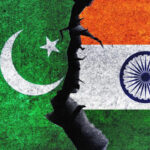India has deep security relationship with Myanmar military.
For India, the return to military rule by Myanmar’s Tatmadaw (Army) and the arrest of Aung San Suu Kyi and the political leadership of the National League of Democracy (NLD), are a repeat of events thirty years ago, but the Modi government’s reaction, is likely to be starkly different to India’s strong public criticism of the Junta’s actions in 1989-90.
“India does care about democracy in Myanmar, but that’s a luxury it knows it will not be able to afford for the time being. The only option will be to engage, building on its outreach in recent years via the security and defence establishment,” said Constantino Xavier, an analyst of India’s neighbourhood policy at the Centre for Social and Economic Progress, when asked about India’s statement of “deep concern” over developments in Myanmar.
One important reason for the change is that India’s security relationship with the Myanmar military has become extremely close, and it would be difficult to “burn bridges” with them given their assistance in securing the North East frontiers from insurgent groups. In a joint visit to Naypyidaw in October 2020, Foreign Secretary Harsh Shringla and Army Chief General Naravane met with both State Councillor Suu Kyi and General Min Aung Hlaing, making it clear that New Delhi saw both relationships at par. Another reason for the change is Ms. Suu Kyi herself, whose image as a democracy icon and Nobel peace laureate has been damaged by her time in office, where she failed to push back the military, and even defended the army’s pogrom against Rohingyas in Rakhine State in 2015.
Officials also say a harsh reaction from India, on the lines of that from the United States which has threatened action against those responsible for the “coup” unless they revoke the military’s takeover, would only benefit China. Apart from strategic concerns, India has cultivated several infrastructure and development projects with Myanmar, which it sees as the “gateway to the East” and ASEAN countries. These include the India-Myanmar-Thailand Trilateral highway and the Kaladan Multi-modal transit transport network, as well as a plan for a Special Economic Zone at the Sittwe deep-water port. Finally, India still hopes to help resolve the issue of Rohingya refugees that fled to Bangladesh, while some still live in India, and will want to continue to engage the Myanmar government on that.
Another reason for the shift is the change within India, say diplomats.
“In 1989 there was a public clamour for India to take a strong stand against the military’s actions and to stand up for Aung San Suu Kyi. I don’t see a loud pro-democracy discourse going out from India this time around,” says former Ambassador to Myanmar Gautam Mukhopadhyaya, referring to street protests and fierce speeches in parliament that took place in India at the time, that called on then Prime Minister Rajiv Gandhi, who had visited Myanmar in 1987, to deal strictly with the Junta. In 1989, after the SPDC military government arrested Suu Kyi, then External Affairs Minister Narasimha Rao had reportedly told a parliamentary panel that not only would the government provide financial support to the democracy movement, no Burmese (Myanmarese) refugees seeking shelter in India would be turned away. Subsequently however, the government took a more pragmatic approach, engaging the military, while pushing for more freedoms in Myanmar.
In the past decade, the balance between engaging Myanmar’s civil and military establishment became easier, once Ms. Suu Kyi was released and the NLD was allowed to form the government in 2015.
“The arrangement between them suited India, as our approach was to smoothen the relationship on both sides. With Monday’s developments, our capacity to play both sides in now diminished,” explained a former senior official who dealt with the bilateral ties. “The choice between India’s democratic ideals, that it has expressed in Nepal and Maldives recently, and ‘Realpolitik’, to keep its hold in Myanmar and avoid ceding space to China, will be the challenge ahead.”
News Analysis | With Myanmar’s military coup, the tightrope between idealism and realpolitik returns for New Delhi
India has deep security relationship with Myanmar military.
For India, the return to military rule by Myanmar’s Tatmadaw (Army) and the arrest of Aung San Suu Kyi and the political leadership of the National League of Democracy (NLD), are a repeat of events thirty years ago, but the Modi government’s reaction, is likely to be starkly different to India’s strong public criticism of the Junta’s actions in 1989-90.
“India does care about democracy in Myanmar, but that’s a luxury it knows it will not be able to afford for the time being. The only option will be to engage, building on its outreach in recent years via the security and defence establishment,” said Constantino Xavier, an analyst of India’s neighbourhood policy at the Centre for Social and Economic Progress, when asked about India’s statement of “deep concern” over developments in Myanmar.
One important reason for the change is that India’s security relationship with the Myanmar military has become extremely close, and it would be difficult to “burn bridges” with them given their assistance in securing the North East frontiers from insurgent groups. In a joint visit to Naypyidaw in October 2020, Foreign Secretary Harsh Shringla and Army Chief General Naravane met with both State Councillor Suu Kyi and General Min Aung Hlaing, making it clear that New Delhi saw both relationships at par. Another reason for the change is Ms. Suu Kyi herself, whose image as a democracy icon and Nobel peace laureate has been damaged by her time in office, where she failed to push back the military, and even defended the army’s pogrom against Rohingyas in Rakhine State in 2015.
Officials also say a harsh reaction from India, on the lines of that from the United States which has threatened action against those responsible for the “coup” unless they revoke the military’s takeover, would only benefit China. Apart from strategic concerns, India has cultivated several infrastructure and development projects with Myanmar, which it sees as the “gateway to the East” and ASEAN countries. These include the India-Myanmar-Thailand Trilateral highway and the Kaladan Multi-modal transit transport network, as well as a plan for a Special Economic Zone at the Sittwe deep-water port. Finally, India still hopes to help resolve the issue of Rohingya refugees that fled to Bangladesh, while some still live in India, and will want to continue to engage the Myanmar government on that.
Another reason for the shift is the change within India, say diplomats.
“In 1989 there was a public clamour for India to take a strong stand against the military’s actions and to stand up for Aung San Suu Kyi. I don’t see a loud pro-democracy discourse going out from India this time around,” says former Ambassador to Myanmar Gautam Mukhopadhyaya, referring to street protests and fierce speeches in parliament that took place in India at the time, that called on then Prime Minister Rajiv Gandhi, who had visited Myanmar in 1987, to deal strictly with the Junta. In 1989, after the SPDC military government arrested Suu Kyi, then External Affairs Minister Narasimha Rao had reportedly told a parliamentary panel that not only would the government provide financial support to the democracy movement, no Burmese (Myanmarese) refugees seeking shelter in India would be turned away. Subsequently however, the government took a more pragmatic approach, engaging the military, while pushing for more freedoms in Myanmar.
In the past decade, the balance between engaging Myanmar’s civil and military establishment became easier, once Ms. Suu Kyi was released and the NLD was allowed to form the government in 2015.
“The arrangement between them suited India, as our approach was to smoothen the relationship on both sides. With Monday’s developments, our capacity to play both sides in now diminished,” explained a former senior official who dealt with the bilateral ties. “The choice between India’s democratic ideals, that it has expressed in Nepal and Maldives recently, and ‘Realpolitik’, to keep its hold in Myanmar and avoid ceding space to China, will be the challenge ahead.”






NO COMMENT